CH 9 Software Evolution
1/23
There's no tags or description
Looks like no tags are added yet.
Name | Mastery | Learn | Test | Matching | Spaced |
|---|
No study sessions yet.
24 Terms
Evolution
The stage in a software system’s life cycle where it is in operational use and is evolving as new requirements are proposed and implemented
Servicing
At this stage, the software remains useful but the only changes made are those required to keep it operational (bug fixes etc), no new functionality is added
Phase-out and Retirement
The software may still be used but no further changes are made to it (have to ‘live with’ any problems)
eventually, the software (and the system it runs on) is taken out of service

Evolution Processes
processes depend on
type of software being maintained
the development processes used
the skills and exp of ppl involved
proposals for change are driver for system evolution
Change Identification and Evolution
depending on organization, the change request process may be informal or formal
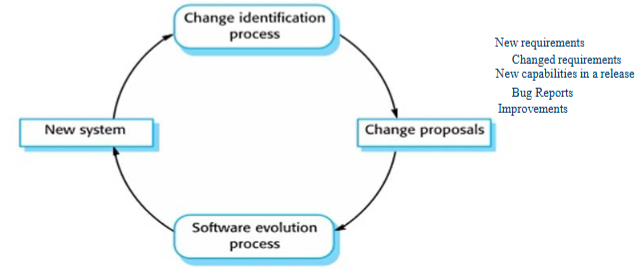
General Model of Software Evolution Process
documentation should be updated
new requirements added, analyzed, and validated
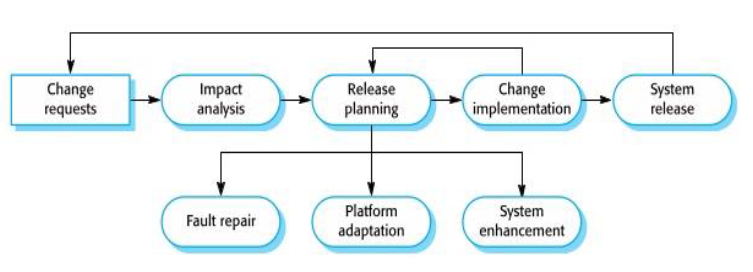
Change Implentation
iteration of the development process where the revisions to the system are designed, implemented, and tested
critical difference: 1st stage of change imp may involve program understanding, especially if the original system developers are not responsible for the change implementation

Urgent Change Request
urgent changes may have been implemented without going through all the stages of the software engineering process
if a serious system fault has to be repaired to allow normal operation to continue

Legacy Systems (LS)
older systems that rely on languages and tech that are no longer used for new systems development
replacing LS is expensive and risky
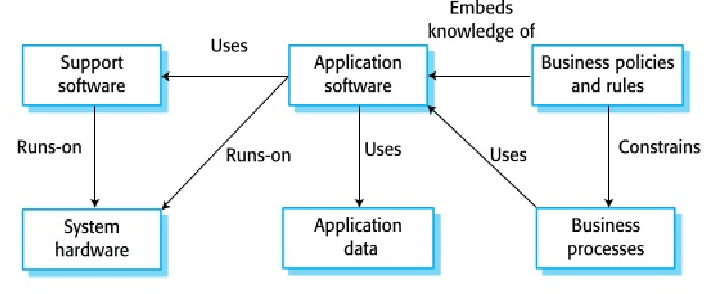
Legacy Systems Assessment Categories
Low-quality, high-business value: should be re-engineering or replaced is suitable system is available
Low-quality, low-business value: should be scrapped
High-quality, low-business value: replace with COTS, scrap completely or maintain
High-quality, high-business value: continue in operation using normal system maintenance
Assessing Business Value
The use of the system: lower use = low business value
the business processes that are supported: LBV if it forces the use of inefficient business processes
system dependability: if not dependable and directly affects customers, LBV
the system outputs: if depends on system outputs, then the system had HBV
Environmental Assessment Factors
supplier stability, failure rate, age, performance, support requirements, maintenance costs, interoperability
Application Assessment Factors
understandability, documentation, data, performance, programming language, configuration management, test data, personnel skills
System Measurement
number of system change requests: higher value = lower sys quality
number of different user interfaces used by system: more interfaces = more inconsistencies and redundancies
volume of data used by the system: as the volume of data processed by the system increases, so too do the inconsistencies and errors in that data
cleaning up old data is a very expensive and time consuming process
Types of Maintenance
to repair SW faults, to adapt SW to a different operating environment, to add or to modify the system’s functionality
Maintenance Cost Factors
team stability, contractual responsibility, staff skills, program age and structure
Maintenance Costs
it is usually more expensive to add new features to a system during maintenance than it is to add the same features during development
Maintenance Prediction
assess which parts of the system may cause problems and have higher maintenance costs
costs depend on maintainability and number of changes
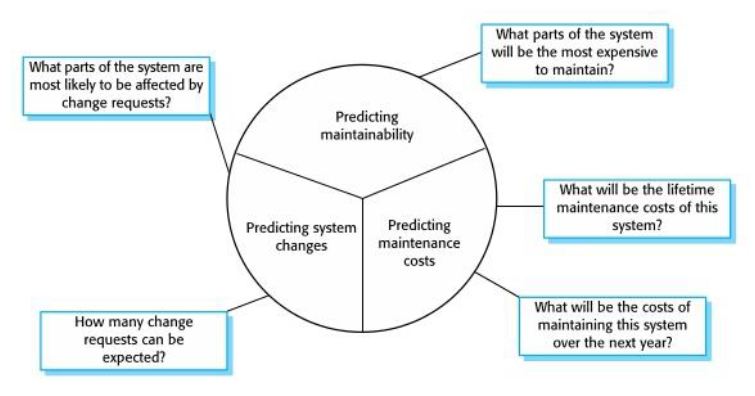
Change Prediction
predicting the number of changes requires an understanding of relationships between system and its environment
factors include number and complexity of sys interfaces, number of inherently volatile sys req, business processes where system is used
Process Metrics
process measurements may be used to assess maintainability
number of requests for corrective maintenance
average time req for impact analysis
average time taken to implement a change request
number of outstanding change requests
if any of these increase, there may be a decline in maintainability
SW Re-engineering
restructuring or rewriting part or all of a legacy system without changing its functionality
takes place after a system has been maintained for some time and maintenance costs are increasing
pros: reduced risk and cost
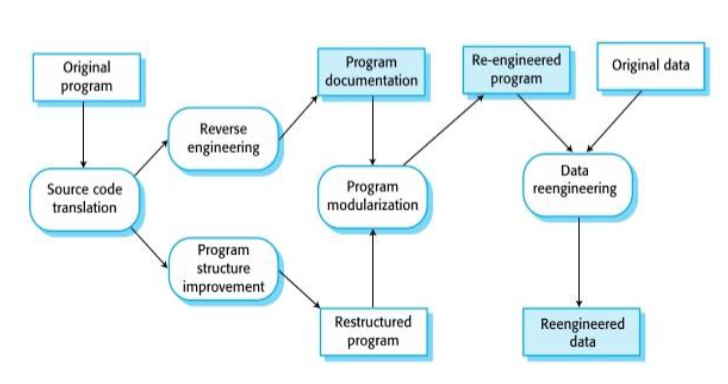
Re-engineering Approaches
organized from lower to higher cost options
cost factors
quality of software
tool support available
extent of the data conversion
availability of expert staff

Refactoring
process of making improvements to a program to slow down degradation through change (preventative maintenance)
should not add functionality, concentrate on improvement
continuous process of improvement throughout the development and evolution process
“Bad Smells”
duplicate code, long methods, switch (case) statements, data clumping, speculative generality